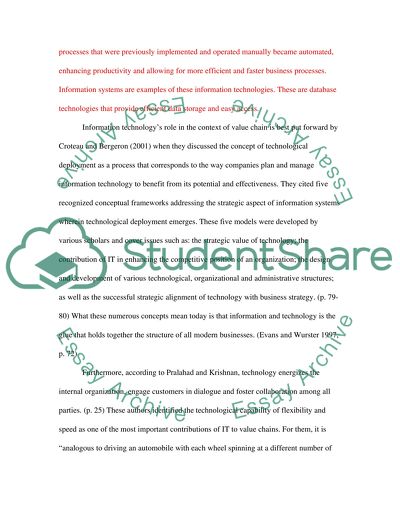Cite this document
(Challenges When Organisations Apply Technologies in Their Value Chains Coursework, n.d.)
Challenges When Organisations Apply Technologies in Their Value Chains Coursework. Retrieved from https://studentshare.org/information-technology/1562160-organisations-are-increasingly-becoming-more-capable-in-taking-advantage-of-new-technological-solutions-to-enable-and-extend-their-value-chain-using-examples-when-appropriate-illustrate-the-advantages-and-challenges-that-organisations-face-when-applying
Challenges When Organisations Apply Technologies in Their Value Chains Coursework. Retrieved from https://studentshare.org/information-technology/1562160-organisations-are-increasingly-becoming-more-capable-in-taking-advantage-of-new-technological-solutions-to-enable-and-extend-their-value-chain-using-examples-when-appropriate-illustrate-the-advantages-and-challenges-that-organisations-face-when-applying
(Challenges When Organisations Apply Technologies in Their Value Chains Coursework)
Challenges When Organisations Apply Technologies in Their Value Chains Coursework. https://studentshare.org/information-technology/1562160-organisations-are-increasingly-becoming-more-capable-in-taking-advantage-of-new-technological-solutions-to-enable-and-extend-their-value-chain-using-examples-when-appropriate-illustrate-the-advantages-and-challenges-that-organisations-face-when-applying.
Challenges When Organisations Apply Technologies in Their Value Chains Coursework. https://studentshare.org/information-technology/1562160-organisations-are-increasingly-becoming-more-capable-in-taking-advantage-of-new-technological-solutions-to-enable-and-extend-their-value-chain-using-examples-when-appropriate-illustrate-the-advantages-and-challenges-that-organisations-face-when-applying.
“Challenges When Organisations Apply Technologies in Their Value Chains Coursework”. https://studentshare.org/information-technology/1562160-organisations-are-increasingly-becoming-more-capable-in-taking-advantage-of-new-technological-solutions-to-enable-and-extend-their-value-chain-using-examples-when-appropriate-illustrate-the-advantages-and-challenges-that-organisations-face-when-applying.


